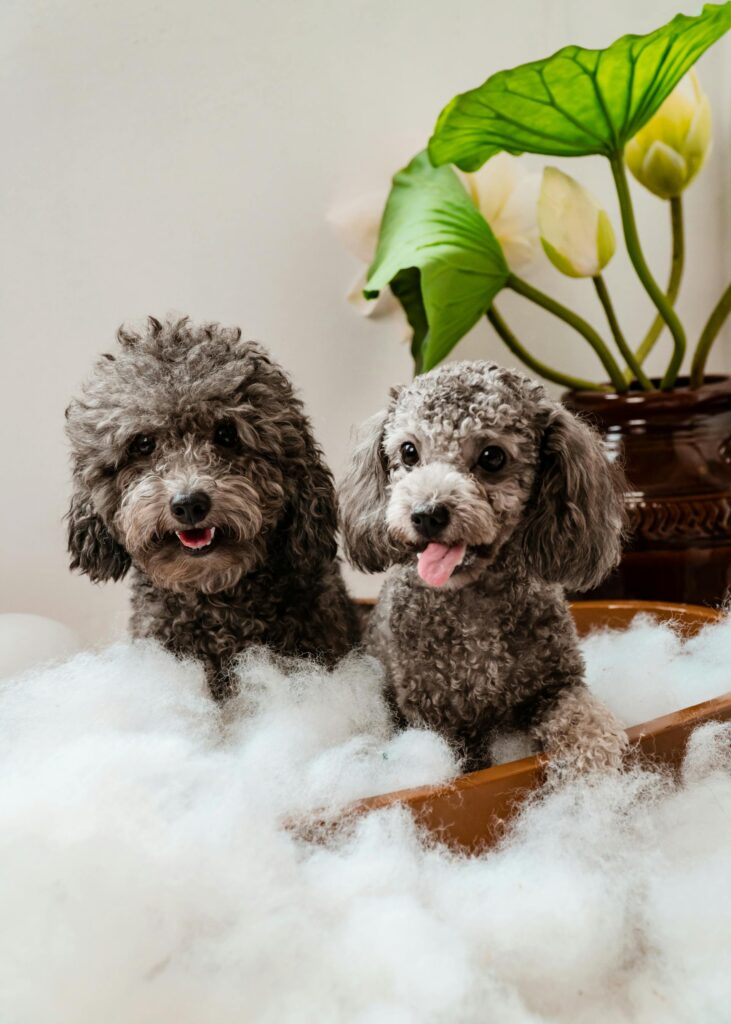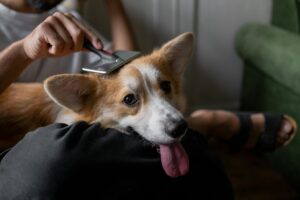A clean dog is a happy dog — and a healthier one too. Proper bathing and hygiene routines are essential for maintaining your pet’s comfort, preventing skin issues, and keeping that signature “dog smell” under control. In this guide, we’ll break down everything you need to know about bathing frequency, grooming habits, and hygiene essentials to help your pup look and feel their best all year round.
_____
1. Understanding Your Dog’s Coat and Skin
Every dog is unique, and their bathing needs depend on their coat type, activity level, and overall health.
Short-haired breeds (like Beagles or Boxers) usually need fewer baths and simple wipe-downs to remove dirt and oil.
Long-haired breeds (like Shih Tzus or Golden Retrievers) require regular baths combined with brushing to prevent mats and tangles.
Double-coated dogs (like Huskies or Shepherds) need careful washing and drying so their undercoat stays clean without causing skin irritation.
💡 Pro Tip: Over-bathing can strip natural oils from the skin, causing dryness or itchiness. Always use a dog-specific shampoo to protect the pH balance of your dog’s coat.
2. How Often Should You Bathe Your Dog?
There’s no one-size-fits-all answer — frequency depends on your dog’s lifestyle:
Active or outdoor dogs: Every 2–4 weeks, or after muddy adventures.
Indoor dogs: Every 4–6 weeks, depending on coat type and odor.
Allergy-prone dogs: As recommended by your vet, using hypoallergenic shampoos.
🧼 Rule of Thumb: If your dog smells bad or feels greasy to the touch, it’s bath time!
3. Step-by-Step Bathing Routine
Follow this simple process for a stress-free bath:
Brush first: Remove tangles and loose fur before wetting the coat.
Use lukewarm water: Avoid hot water — it can dry out your dog’s skin.
Apply dog shampoo: Lather gently, avoiding the eyes and inside of ears.
Rinse thoroughly: Soap residue can cause itching or dandruff.
Dry completely: Use a towel or a pet-safe dryer on low heat.
🎵 Tip: Talk calmly and offer treats to make bath time a positive experience.
4. Essential Hygiene Beyond Bathing
Bathing is only part of keeping your dog clean. Regular hygiene tasks are just as important:
Ear Cleaning: Prevent infections by wiping with a vet-approved cleaner once a week.
Teeth Brushing: Brush 2–3 times per week with canine toothpaste to fight plaque.
Nail Trimming: Keep nails short to avoid pain and posture problems.
Paw Care: Check for cuts, debris, or irritations, especially after walks.
✨ Keeping up with these routines ensures your pup stays comfortable, odor-free, and healthy.
5. Common Bathing Mistakes to Avoid
Even well-intentioned owners sometimes make grooming errors:
🚫 Using human shampoo — it disrupts your dog’s natural oils.
🚫 Skipping brushing before the bath — this causes tangles.
🚫 Forgetting to rinse — leftover soap can lead to skin irritation.
🚫 Bathing too often — it can dry out the coat and cause itching.
6. Choosing the Right Products
Select products based on your dog’s coat, skin type, and sensitivities:
For sensitive skin: Oatmeal or aloe-based shampoos.
For odor control: Charcoal or citrus-infused formulas.
For shedding: Conditioners with omega fatty acids.
For puppies: Tear-free, mild shampoos designed for young skin.
Always test a new product on a small patch before full use to ensure there’s no allergic reaction.
🐾 Conclusion
Bathing and hygiene aren’t just about appearance — they’re about keeping your dog comfortable, healthy, and confident. A consistent routine builds trust between you and your pet while preventing skin problems and unpleasant odors. With the right products, proper timing, and gentle care, bath time can become a bonding experience both of you look forward to.




